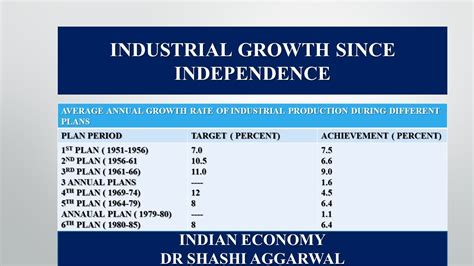

India’s Industrial Boom: A Journey from 1991 to 2025
India’s Industrial Landscape: 1991-2021
Pre-1991 Era
Prior to 1991, India’s economy was largely closed and protected, with extensive government control over industries. However, this approach hindered industrial growth and innovation.

1991 Economic Reforms
In 1991, India embarked on a series of sweeping economic reforms to liberalize the economy and promote industrial growth. These reforms included:
- Delicensing and deregulation of industries
- Reduction of import tariffs
- Foreign direct investment liberalization
- Privatization of state-owned enterprises
Industrial Growth Post-1991
The economic reforms of 1991 had a transformative impact on India’s industrial sector. Key indicators of industrial growth since then include:
Table 1: Key Indicators of Industrial Growth in India (1991-2021)
| Indicator | 1991 | 2021 |
|---|---|---|
| Industrial Production Index (2012=100) | 100.0 | 235.9 |
| Index of Industrial Production (IIP) Growth (%) | -0.3 | 12.5 |
| Manufacturing Growth (%) | 0.6 | 8.9 |
| Contribution to GDP (%) | 24.6 | 17.4 |
| Employment in Industry (Millions) | 116.0 | 160.0 |
Factors Driving Industrial Growth
Several factors have contributed to India’s industrial growth since 1991:
- Liberalization and Deregulation: Reduced government intervention and increased competition fostered innovation and efficiency.
- Foreign Direct Investment: Foreign investment brought advanced technologies, expertise, and capital to India’s industries.
- Technological Advancements: Automation, digitization, and robotics have increased productivity and competitiveness.
- Rising Domestic Demand: India’s growing middle class has driven demand for manufactured goods and services.
- Government Support: Industrial policies, tax incentives, and infrastructure development have supported industrial growth.
Challenges to Industrial Growth
Despite the significant progress made, India’s industrial sector faces challenges:
- Infrastructure Bottlenecks: Inadequate infrastructure, such as roads, ports, and energy, hinders logistics and supply chains.
- Skills Gap: The workforce lacks specialized skills required for advanced manufacturing technologies.
- Global Competition: India competes globally with countries that offer lower production costs and higher labor productivity.
- Environmental Concerns: Industrial growth can lead to environmental degradation and emissions.
India’s Industrial Growth Outlook: 2023-2025
Government Initiatives
The Indian government has ambitious plans to boost industrial growth and achieve self-reliance. Key initiatives include:
- Make in India 2.0: A program to promote domestic manufacturing, attract investments, and foster innovation.
- PLI Schemes: Production Linked Incentive schemes provide financial support to industries to enhance production and exports.
- Industrial Corridors: Development of industrial corridors to create clusters of industries and improve connectivity.
Emerging Trends
Several emerging trends are shaping India’s industrial landscape:
- Digital Transformation: Automation, IoT, and data analytics are transforming manufacturing processes and supply chains.
- Green Industrialization: Focus on sustainable manufacturing practices and products to reduce environmental impact.
- R&D and Innovation: Investment in research and development to foster technological advancements and new applications.
- Reliance on Domestic Manufacturing: India aims to reduce import dependency and promote self-sufficiency in key industries.
Tips and Tricks
Businesses and entrepreneurs can harness India’s industrial growth opportunities by:
- Investing in Technology: Embrace digital technologies and automation to improve productivity and efficiency.
- Developing Niche Products: Focus on specialized products that cater to specific market needs and reduce competition.
- Partnering with Academia: Collaborate with research institutions to access expertise and develop innovative solutions.
- Exploring Global Markets: Expand operations overseas to take advantage of export opportunities.
- Seeking Government Support: Utilize government incentives and schemes to reduce operational costs and gain competitive advantage.
FAQs
1. What was the impact of the 1991 economic reforms on India’s industrial sector?
The reforms led to liberalization and deregulation, fostering innovation, competition, and foreign investment, leading to significant industrial growth.
2. What challenges does India’s industrial sector face?
Infrastructure bottlenecks, skills gap, global competition, and environmental concerns are key challenges facing the industry.
3. How is the government supporting industrial growth?
The government has implemented initiatives such as Make in India, PLI schemes, and industrial corridors to promote domestic manufacturing and innovation.
4. What are the emerging trends in India’s industrial landscape?
Digital transformation, green industrialization, R&D, and reliance on domestic manufacturing are shaping the industry’s future.
5. How can businesses leverage India’s industrial growth opportunities?
Investing in technology, developing niche products, partnering with academia, exploring global markets, and seeking government support can help businesses succeed.
6. What is the government’s target for industrial growth by 2025?
The government aims to increase India’s industrial output by 20% by 2025, creating millions of new jobs and contributing significantly to economic growth.
7. How is the Indian government promoting green industrialization?
The government has introduced several policies and incentives to encourage the adoption of sustainable practices, such as energy efficiency measures, water conservation, and waste management.
8. What role is technology playing in the transformation of India’s industrial sector?
Digital technologies, automation, and data analytics are revolutionizing manufacturing processes, supply chains, and product development, leading to increased productivity, efficiency, and innovation.
Conclusion
India’s industrial sector has witnessed remarkable growth since 1991, driven by economic reforms, foreign investment, and technological advancements. While challenges remain, the government’s initiatives and the emergence of new trends present promising opportunities for continued industrial expansion. By leveraging these opportunities and addressing the challenges effectively, India can position itself as a global industrial powerhouse in the coming years.










